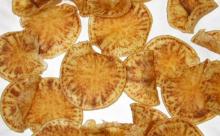Assessing the potential of the psyllid Trioza anthrisci to vector Liberibacter solanacearum (Lso) in Scotland

The aim of this project was to assess the distribution and population numbers of the psyllid Trioza anthrisci and it’s potential as a vector of ‘Candidatus Liberibacter
solanacearum’ (Lso). The project has allowed the PHC to better understand the distribution and number of T. anthrisci populations in carrot growing areas to better inform assessment of the risk of disease transmission to crops in Scotland. A small population of this species has been identified in the North East, detected on carrot crops around Elgin during August. No further populations were found on carrot crops further south, or on wild plants at any sampling site across Scotland, so the population may be relatively small and isolated. Although found on carrots, individuals collected were reared successfully on cow parsley, which is commonly found in Scotland around hedgerows and verges. It is therefore possible that the distribution is wider than that observed during sampling, but that difficulties in inspecting and sampling these plants contributed to the lack of detection. Overall this project has allowed staff working within the PHC to develop new networks and work in partnership, sampling a more extensive area and sharing risk by working together. The objectives have been met and a colony of T. anthrisci is now in culture at SASA, which can be optimised through lessons learned during this study and potentially used for Lso transmission studies in future projects. Plant Health Centre capability has been increased, improving preparedness in the event of an outbreak.
Visit the CABI web site for further reading on Zebra chip
